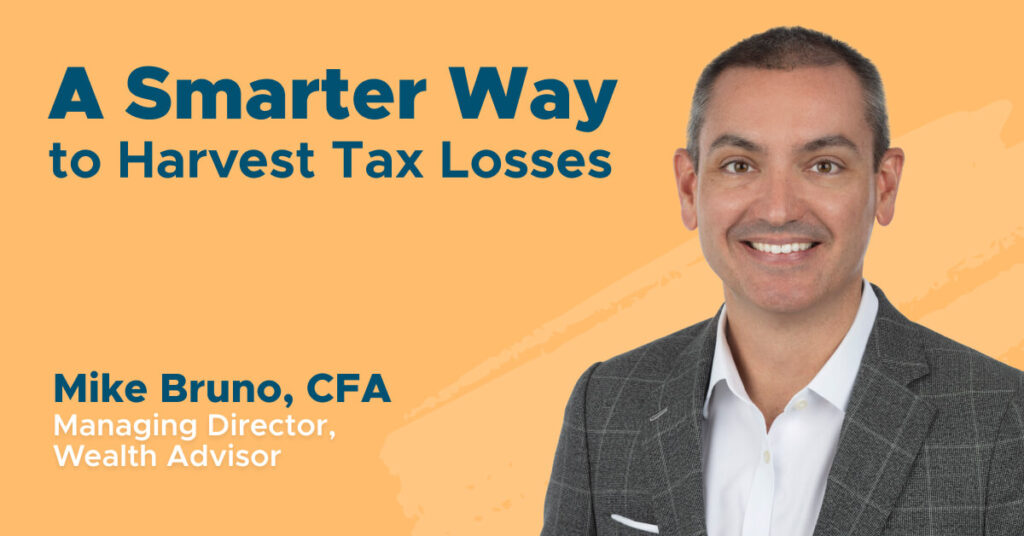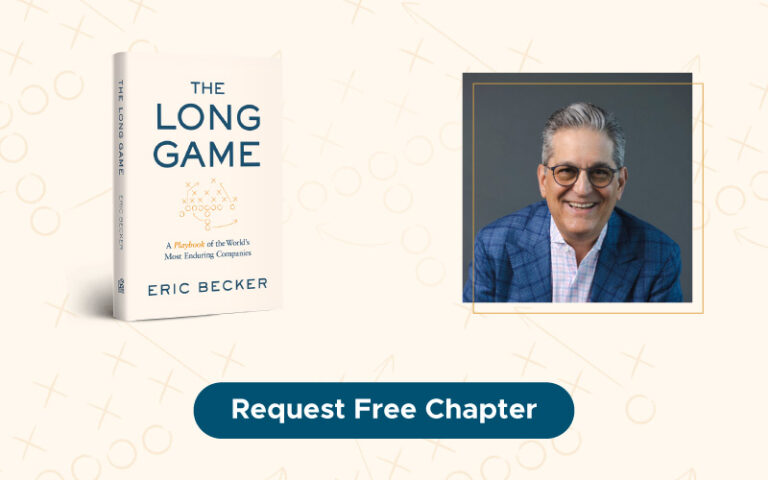
By Mike Bruno, CFA, Managing Director, Wealth Advisor
In the world of investing, nobody likes to talk about their “losers.” But the reality is that managing losses is just as important as capitalizing on gains. One of the most powerful tools available to investors and their advisors is tax-loss harvesting – where realized losses on investments can offset taxable gains, ultimately lowering your tax bill. As one of my first mentors used to say, “a loss is an economic asset.” This is more than just a clever phrase. When managed properly, a loss can create long-term value. In the right context, a realized loss doesn’t just reduce your tax bill in the short term; it provides ongoing tax benefits that can enhance a portfolio’s return over time.
An outsized capital gain event can take many forms, including reducing a long-held concentrated stock position, selling a closely held business or property, or repositioning a taxable portfolio from a growth orientation towards income generation. In nearly 20 years of working closely with wealthy families, I’ve learned one thing that is almost always true: there’s a capital gains tax to be paid in any given year.
That’s why tax-loss harvesting should be a year-round strategy, not just a year-end exercise.
Many successful families work with wealth managers to systematically harvest tax losses year-round. By doing so, those losses translate into tax benefits (or tax dollars saved). Those tax savings can then be reinvested, allowing investors to potentially compound wealth more efficiently. It is important to note: these losses are a secondary goal – the primary goal is to match the return of an index, like the S&P 500 or Russell 3000.
The Limitation of Traditional “Long-Only” Strategies
There’s a significant limitation with the traditional tax-loss harvesting strategy. After three to four years, the ability to manufacture losses typically runs out. That is because most tax-loss harvesting managers run “long-only” strategies, which means they only buy and hold stocks – without short selling or betting against stocks. These strategies track an index while generating roughly 5% of the account’s market value in tax losses annually. However, over time, as markets generally rise on average, the number of losing positions typically decreases, making it harder to generate new losses to harvest.
For example, let’s say you have $1,000,000 invested in a long-only S&P 500 strategy with active tax-loss harvesting. Throughout the year, stocks that have declined in value are sold to “harvest” the loss. The money from those sales is typically reinvested in similar companies to keep the portfolio on track with the market. Meanwhile, the losses that were realized are recorded and can be used later to offset gains and lower your tax bill. If the market goes up 10% over the year, the account value would climb to $1,100,000. But you would also have roughly $50,000 in tax losses banked. In essence, you get to “have your cake and eat it, too” – enjoying the market’s growth and reaping tax-saving losses at the same time.
Better Outcomes with Long/Short Harvesting
We recently met with a prospective client who had $10,000,000 invested in a long-only tax-loss harvesting solution at a large bank. His portfolio should have been generating at least $500,000 in tax losses annually, but after analyzing his portfolio, we discovered he only received $40,000 in realized losses – less than 1% of his account’s value. Even more surprising, the fees he paid exceeded the tax losses he harvested, which significantly reduced the overall benefit of the strategy. This is unfortunately a surprisingly common scenario. If you and your advisors haven’t reviewed last year’s 1099, it’s worth checking whether your current strategy is delivering the value it promises.
The good news is that solutions now exist that can generate tax losses in all market conditions, and for much longer time periods (decades) than their long-only peers. These strategies use both long and short positions. When stocks in a portfolio rise, the short positions intentionally lose value—but that’s by design. Those losses are realized for tax purposes, while the long positions continue to capture the market’s gains. As a result, your portfolio can still track the index while generating tax-saving losses – even in favorable market conditions.
The client mentioned earlier transferred his existing stock portfolio in-kind to one of these managers and now expects to receive roughly $700,000 in annual tax losses on his $10,000,000 portfolio. Not only will he receive the return of the market, but he’ll also enjoy up to $285,000 of tax benefits each year. That’s real money that will continue to compound for his benefit and future generations.
The Bottom Line
Proactive tax-loss harvesting – especially using advanced long/short methods – can significantly enhance after-tax returns for investors. This powerful tool not only delivers short-term tax savings, but also compounds over time, providing increasing benefits in future years. Though it may seem complex, with the right team of advisors and the right strategies in place, this complexity potentially can work to your advantage, unlocking tax-saving potential that grows alongside your investments.
If you’re ready to explore how a long-short tax-loss harvesting strategy can enhance your portfolio’s growth, reach out to our team at Cresset. We’ll work with you to craft a personalized strategy that meets your financial goals and maximizes tax-saving opportunities for you and your family.
Contact us to learn more.
About Cresset
Cresset is an independent, award-winning multi-family office and private investment firm with more than $235 billion in assets under management and advisement (as of 10/31/2025). Cresset serves the unique needs of entrepreneurs, CEO founders, wealth creators, executives, and partners, as well as high-net-worth and multi-generational families. Our goal is to deliver a new paradigm for wealth management, giving you time to pursue what matters to you most.
https://cressetcapital.com/disclosures/
